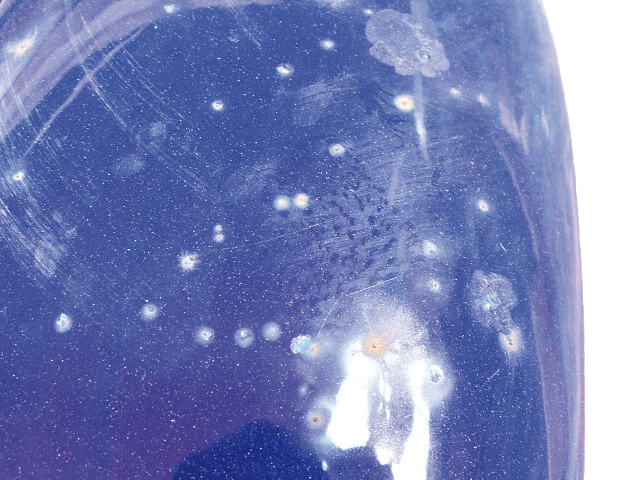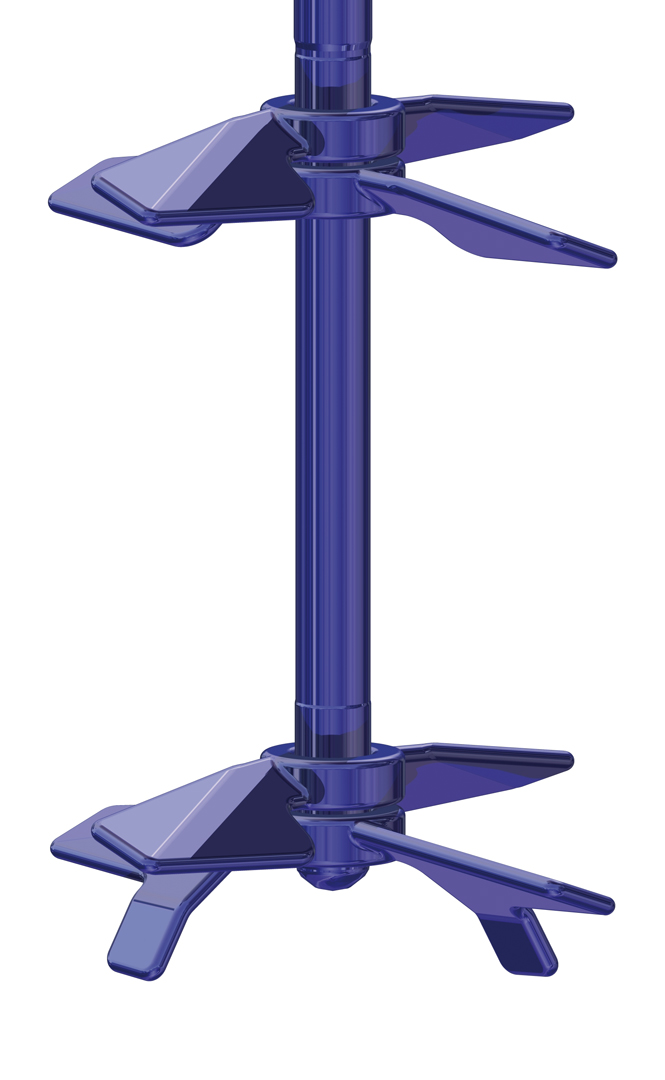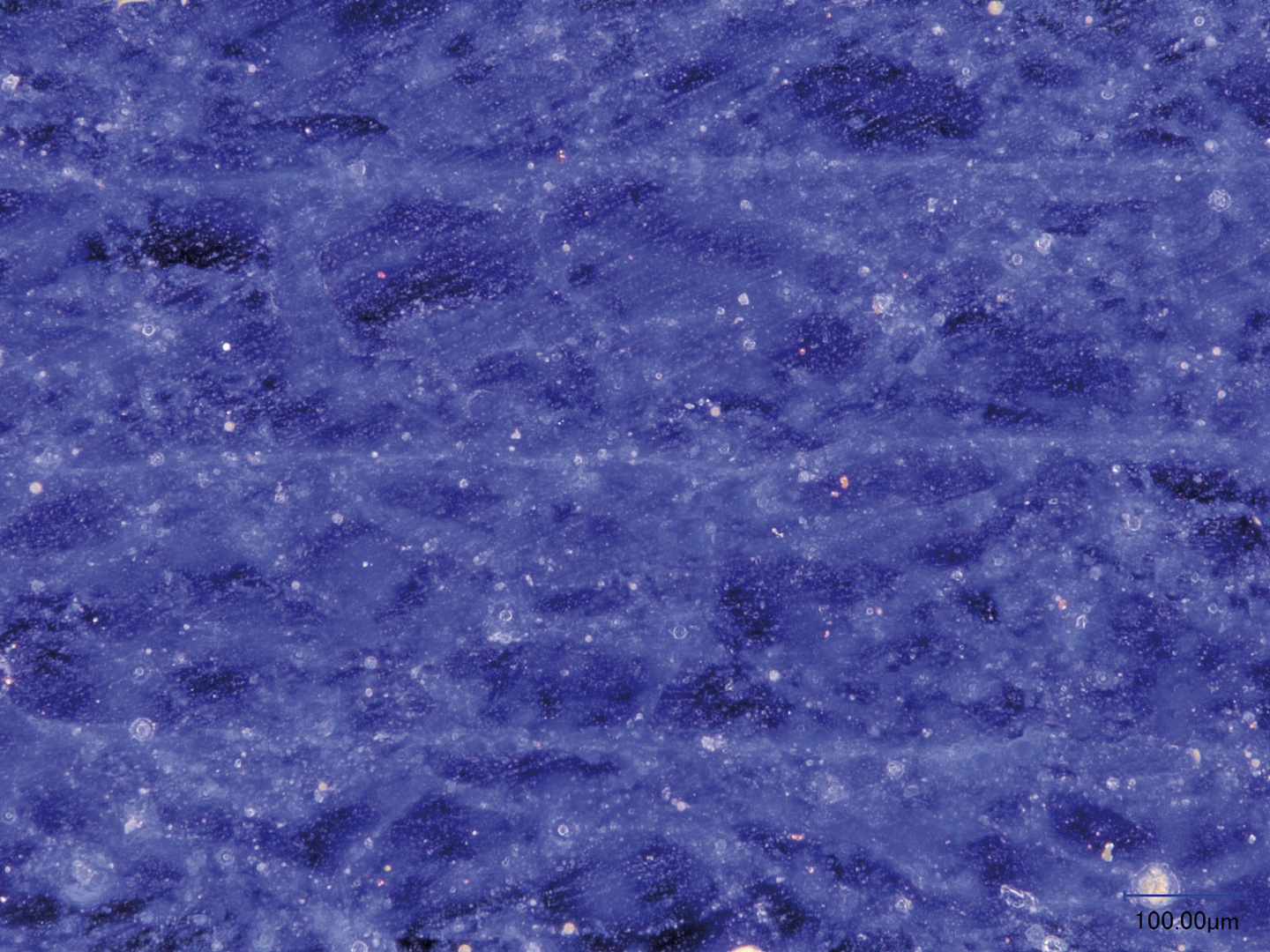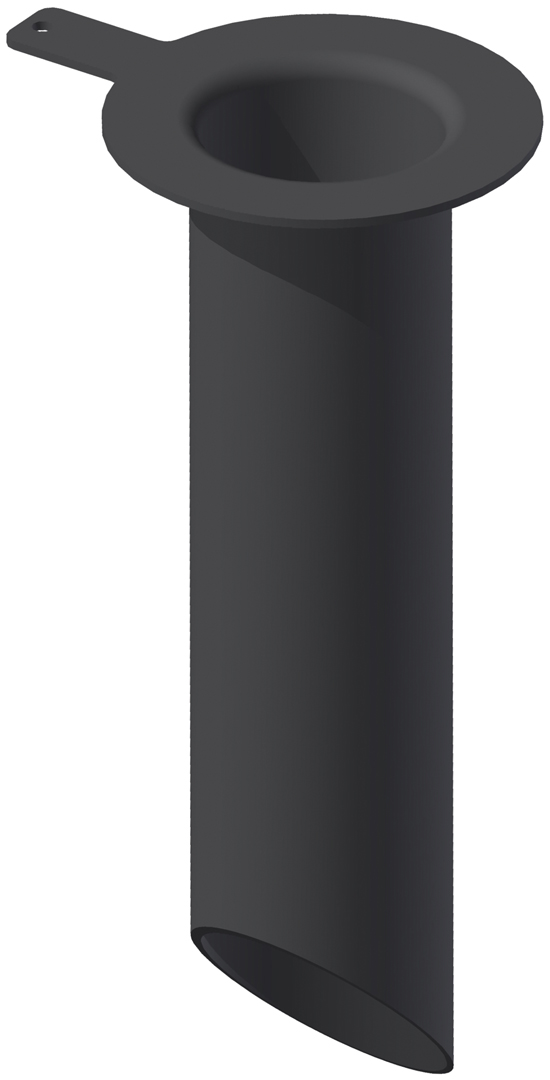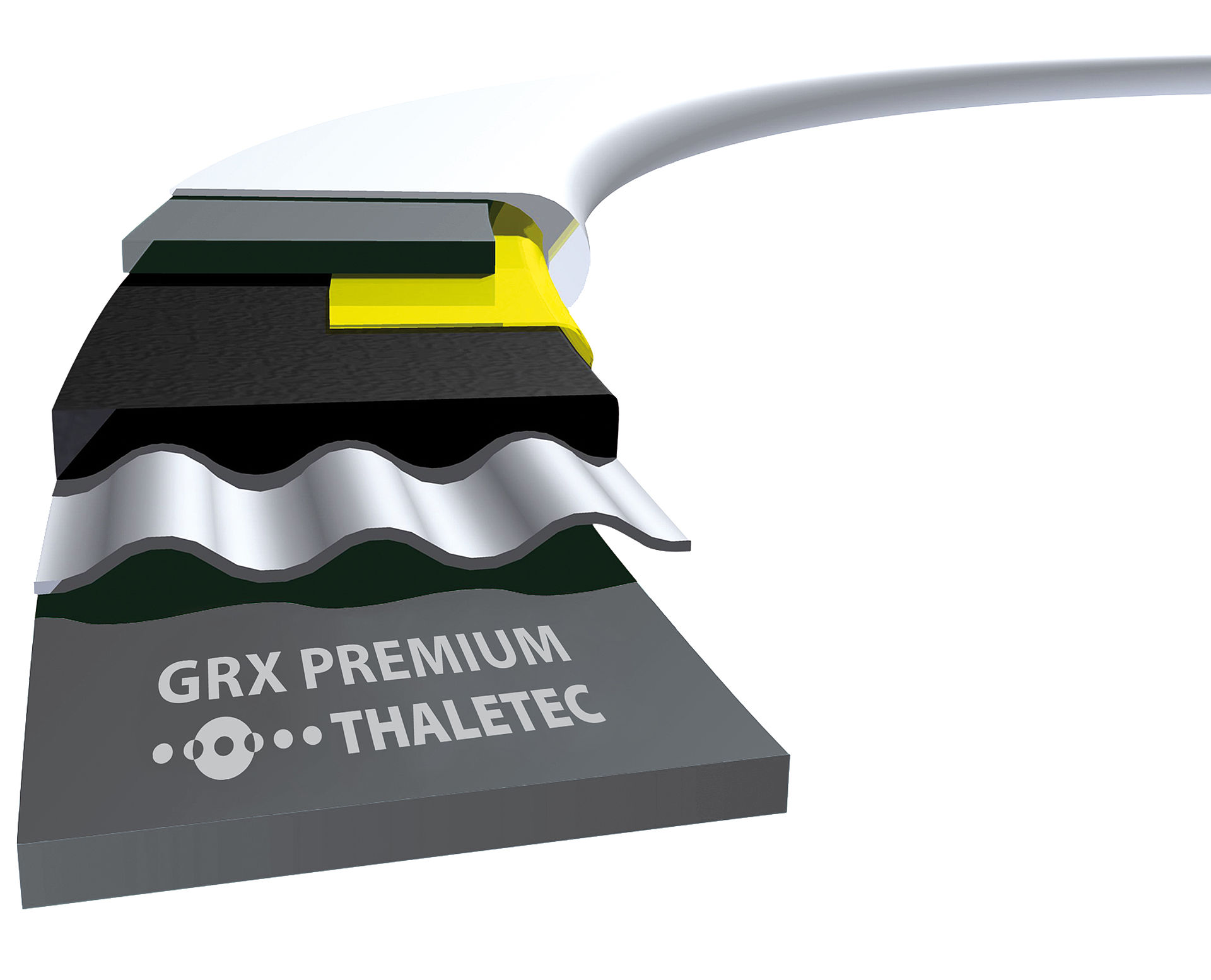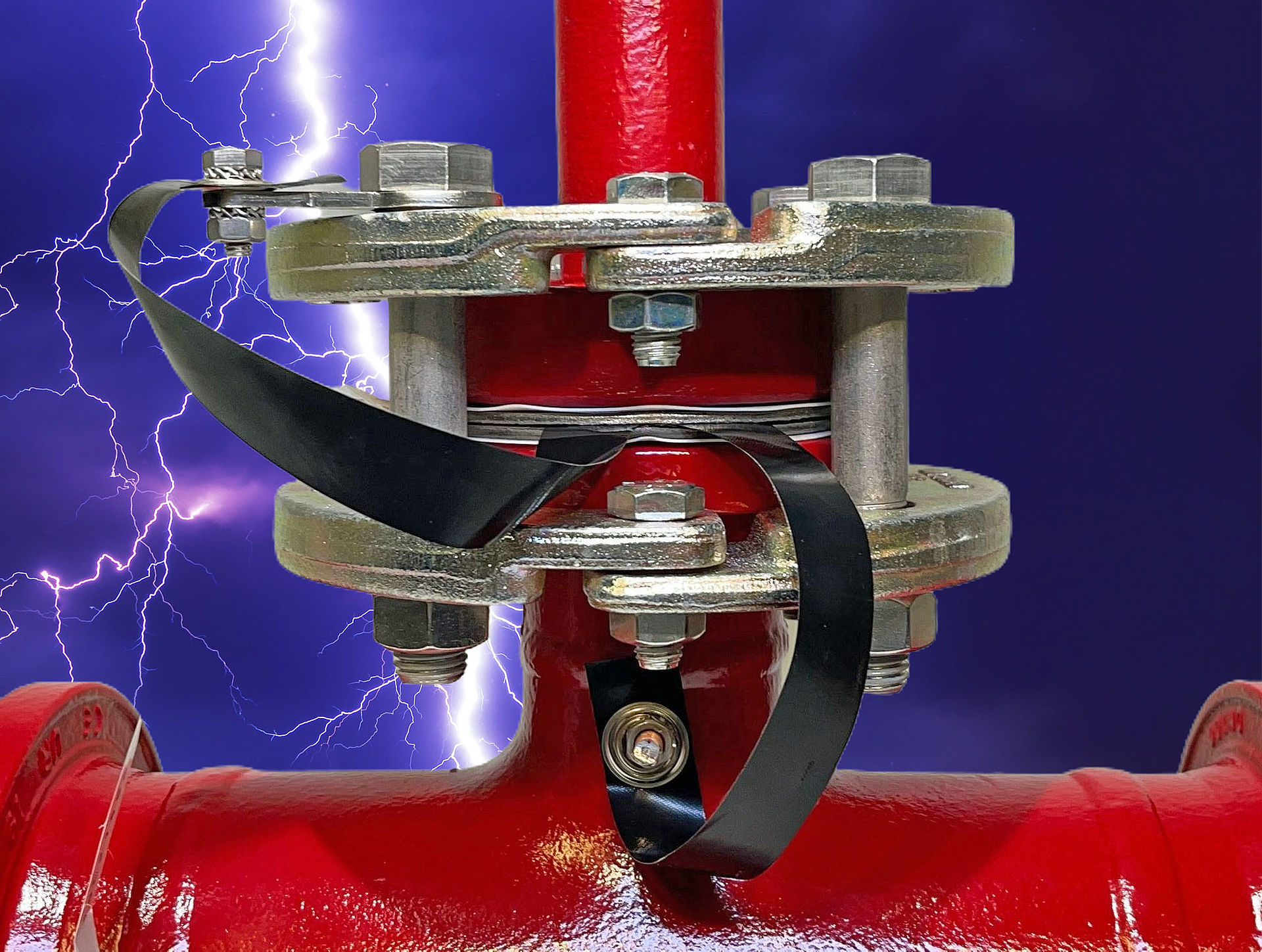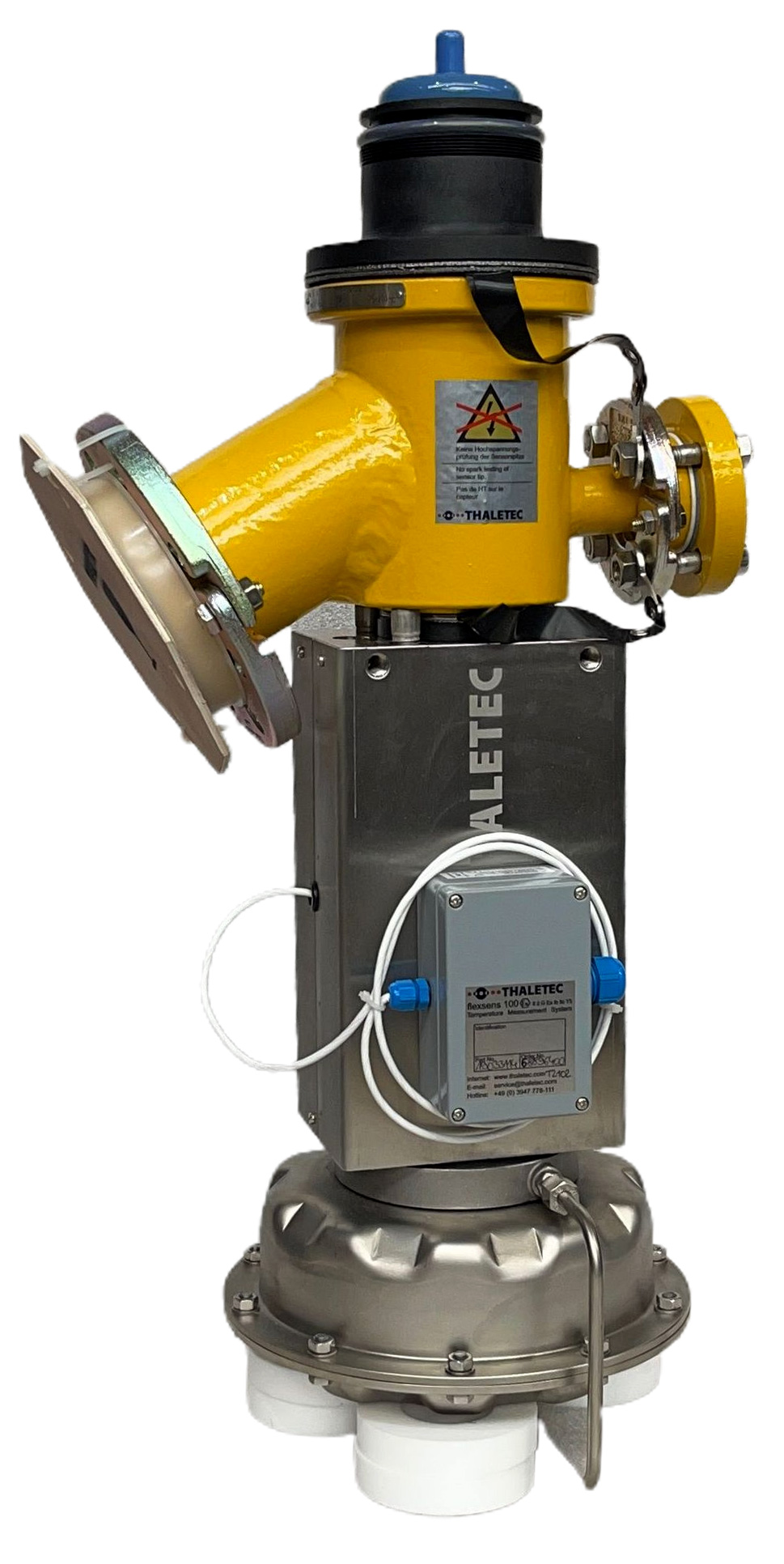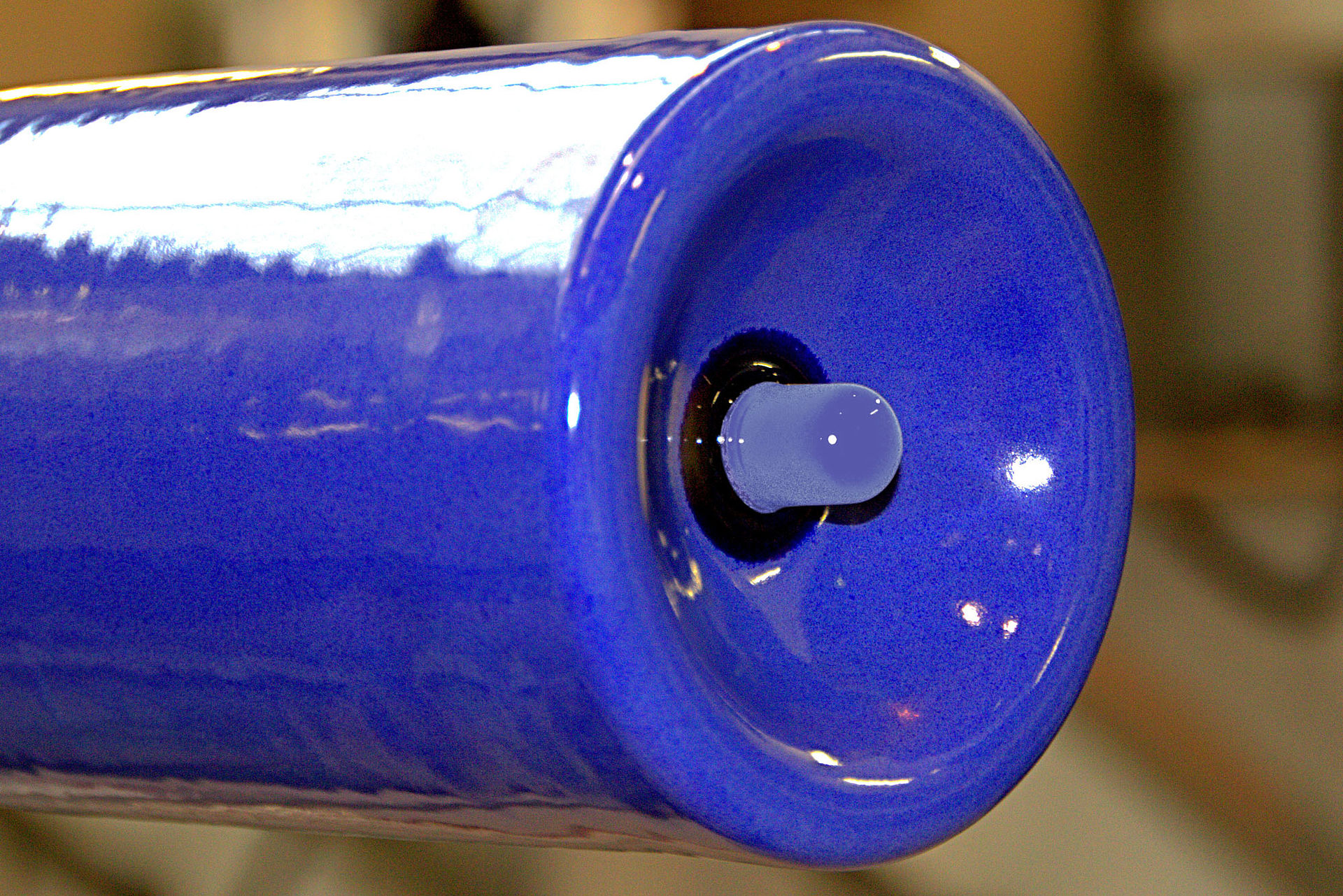Solutions for processes with electrostatic charge in glass-lined equipment
Normal chemical glass-linings are electrically insulated. Should an electrical charge occur when stirring, filling or emptying the reactor, it must be ensured using appropriate measures that this charge does not pose a risk to the reactor and the surrounding area.
As an example, an electrical charge in the kV range can cause notorious "electrostatic discharge".
One spark pierces the entire glass-lining, creating a channel with a diameter of a few tenths of a millimetre, which extends as far as the steel body of the equipment.
A corrosive medium can penetrate this channel and corrode the steel which will ultimately lead to major damage.
Damage caused by electrostatic discharge occurs mainly in places with a high relative speed between the medium and the glass-lined component (e.g. at the tip of the agitator blades or in the area around the tank bottom and outlet nozzle) as well as at the phase boundary between the liquid and the gas compartment.
Therefore in processes during which potentially there could be an electrostatic charge or discharge, the following aspects should be carefully noted:
- prevention of electrostatic charge by adjusting the process
- glass-lining type: electrically conductive glass-lining
- materials used in the fitted components
- electrically conductive shaft-hub connections
- electrically conductive flange gaskets
- electrically conductive elements in the reactor
Adjusting the process to prevent discharge
The "best" way to prevent damage to glass-lined equipment as a consequence of discharge, is of course, to prevent the occurrence of an electrostatic charge. Even if this is often not completely possible, a few aspects should be mentioned here which quite possibly could help to minimise the greatest risks.
Increasing the temperature level of the process
The electrical conductive property of the glass-lining depends on its temperature. If the temperature level of the process can be increased, damage as a consequence of electrostatic discharge becomes increasingly unlikely. Just a rise in the temperature level by a few Kelvin can reduce the risk. The specific electrical resistance of glass-linings generally is in the region of > 1012 Ωcm in ambient temperature. It drops in a straight line up to 400°C to about 105 Ωcm (Source: Petzold, A., Pöschmann, H.: Email und Emailliertechnik, Wiley-VCH; 2nd edition, revised (1992))
Reducing turbulence and speed
The degree of turbulence in the reactor as well as the level of the relative speeds between the medium and the walls of the fitted components, the agitator and the tank determine, inter alia, the extent of the electrostatic charge.
Accordingly, the extent of the charge can be reduced if the turbulence and speed can be reduced.
Even without having any great impact on the quality of the mixing process, the reduction in the agitator speed, for example, by a few revs/min can contribute to a significant reduction in static electricity.
Also the use of agitating elements with a light shearing action (e.g. axial impeller like the THALETEC TAF-Turbine instead of a radial action agitating element such as the CXU or CXR-Turbine) can help to reduce static electricity.
Ensuring minimal conductivity of the medium
Even the smallest amounts of conductive substances which are subsequently distilled off again or filtered out, can help to reduce the risk of an electrostatic discharge and thus damage to the glass-lining.
Cleaning media and the cleaning process
In some cases it is not the actual process which is critical in relation to electrostatic charges, but just the cleaning process following a batch or campaign.
Here it should be checked to what extent adding conductive media to non-conductive solvents (or the use of conductive solvents) can reduce the risk of an electrostatic charge.
In addition, the temperature level of the cleaning process could also be increased, with equally positive effects.
Conductive glass-lining
The adjustment of and the amendment to process engineering conditions is the most effective step, even if one of the most difficult.
In order to eliminate, as far as possible, the risk of damage to the glass-lining as a consequence of an electrostatic discharge, the use of an electrically conductive or at least a conductive glass-lining is worth consideration:
- The patented glass-lining THALETEC CONDUSIST (Flyer K098) which has proved its worth time and again in practice, continuously conducts electrostatic charges away from the glass-lined reactor and thereby prevents damage to the glass-coating.
- In addition, the risk of a spark being ignited is reduced and the area of application for glass-lined reactors is significantly expanded.
- CONDUSIST conducts the electrical charge away from the surface of the glass-lining which is in contact with the product.
- The remaining residual charge is about 1% of the electrical charge of a conventional technical glass-lining.
The CONDUSIST glass-lining consists of an electrically conductive base coat and several cover coats which are also electrically conductive.
The base coat and cover coat contain ceramic particles (no catalytic effect) arranged in a network-like pattern, which divert the electrical charge to the steel body of the glass-lined equipment.
The essential advantages of THALETEC CONDUSIST are:
- The entire glass-lining is electrically conductive; thus the conductivity remains even after a corrosive attack on the glass-lining until it reaches its limit of use
- Chemical resistance of THALETEC CONDUSIST corresponds to that of the established RAS GLASS
- CONDUSIST has no catalytic effect
- Light blue in colour, similar to THALETEC TPE 2000 (Pharma glass) for the manufacture of active pharmaceutical ingredient
- All relevant components can be made with an antistatic coating based on THALETEC CONDUSIST
- Glass-lining complies with DIN EN ISO 28721-1
- CONDUSIST can be tested using high voltage testing (5KV, AC). There is a video available on YouTube which explains the test process and demonstrates evidence of damage to the CONDUSIST coating.
It is also worth mentioning that split agitators, such as MultiFlex and CryoTec, do not require additional conductive elements in the shaft-hub connection in order to ensure the conductivity of the glass-lining of the agitating element.
The use of CONDUSIST is particularly significant in multi-purpose systems.
When the process engineering system needs to "react" to changing and not always foreseeable requirements in the future, CONDUSIST can considerably extend the area of application.
Fitted components made of electrically conductive PTFE
Virgin PTFE (white) is not electrically conductive per se. Using additives which are embedded in the PTFE sinter mass and which are then inserted on sintering the component, PTFE can be made electrically conductive. In this process the colour of the components changes from white to black.
Feed pipes
Feed pipes which protect tank nozzles and keep the media introduced (liquids or solids) away from the tank wall are available from THALETEC in virgin PTFE as well as electrically conductive and FDA-approved PTFE for nominal diameters DN 25 to DN 400 (Spare parts catalogue K048).
The length of the straight feed pipes is designed in such a way that they are about twice as long as the cylindrical area of the respective tank nozzle.
In addition, the end of the feed pipes has an angular section in order to ensure the defined draining of liquid residues.
The electrically conductive feed pipes have an earth clip. This is absolutely essential in order to ensure the earthing of the fitted component which would otherwise not be earthed.
Gaskets
Electrical conductiv flange gaskets
THALETEC flange gaskets are designed analogous to DIN 28148 and have a corrugated ring made of stainless steel as well as a gasket insert made of a suitable, temperature-resistant soft material.
THALETEC offers two sealing systems: The aramid fibre based system, AGR (Flyer K025) and the expanded graphite based system, GRX (Flyer K099). Both insert materials are sufficiently electrically conductive and can be earthed using metallic earth clips.
For special applications and the highest specifications in relation to the electrical conductivity the gasket sleeves made of mechanically produced PTFE can also be made to be electrically conductive (black).
For applications where static dissipation is necessary and required, PTFE-encapsulated flange gaskets for glass-lined equipment and piping can be electrically grounded.
With the THALETEC ConduStrip, any PFTE-encapsulated gasket can even be retrofitted with a grounding lug directly during installation in the flange connection.
The THALETEC ConduStrip consists of an electrically conductive, highly tear-resistant strip made of PTFE, which is inserted between the corrugated ring and the soft-material insert when the gasket is installed. After tightening the flange gland, the THALETEC ConduStrip is securely and positively fixed in the gasket.
The THALETEC ConduStrip can be connected to a flange screw with the tooth washer attached to it. Alternatively, there is a fastening option for a screwed-on grounding cable.
The THALETEC ConduStrip can be used with all PTFE-enveloped flange gaskets certified and approved by THALETEC and designed according to DIN 28148. Details about the ConduStrip can be found in flyer K159.
ConduValve Electrically conductive glass-lined bottom outlet valves
The bottom outlet valves "PremiumValve" (Flyer K016) and "PremiumValve Pharma" (Flyer K071), developed and manufactured by THALETEC, have proven themselves for years in all conceivable applications in the chemical and pharmaceutical industries.
The modular system designed by THALETEC makes it possible to configure the appropriate bottom outlet valve for the respective application.
An additional option is now available under the name "ConduValve".
The ConduValve is designed for processes where there is a risk of electrostatic discharge, for example when processing polar solvents such as toluene.
The core of the THALETEC ConduValve is the glass-coating: all enameled surfaces in contact with the media are glass-lined with the electrically dissipative THALETEC Condusist (flyer K098). These are the valve stem and the valve body. In addition, the QuickTip temperature measuring tip (Flyer K061) for the FlexSens temperature measuring system (Flyer K053) is also glass-lined with the conductive Condusist.
Complete conductivity is further ensured by PTFE components made of FDA-approved, electrically conductive PTFE (valve seat, bellows suitable for cleaning) and electrically conductive THALETEC Conduseal flange gaskets (flyer K100).
QuickTip TN -Electrically Conductive Glass-lined Temperature Probes
The THALETEC temperature measurement system QuickTip (Flyer K061) or QuickTip Tandem (Flyer K114) in combination with the pT 100 sensor FleXsens (Flyer K053) is known to most of our customers. QuickTip and FlexSens are synonymous for fast, accurate and reliable temperature measurement in glass-lined equipment. 100% of all temperature measurement points in glass-lined equipment have been made with FlexSens temperature sensors and more than 80% also with the QuickTip measuring tip.
The QuickTip temperature probe is now electrically conductive enameled as standard. Details can be found here.
Important: Inertisation "despite" conductivity is still necessary
Now and again, manufacturers of glass-lined equipment and components get the impression that in using conductive glass-linings as well as conductive fitted components enough has been done to satisfy the requirements of explosion protection. This is not the case! Quite irrespective of the measures taken, where there a risk of a potentially explosive atmosphere in the equipment it is imperative to avoid the risk of ignition. This can be done through the inertisation of the gas compartment of the equipment.
Would you like some advice? Talk to us!
This article describes in essence all useful and practical technical solutions for creating and ensuring electrical conductivity in glass-lined equipment. Talk to our experts if you still have questions.
Just contact your area manager if you require further advice on the topic of static electricity. Or send a short email to process(at)thaletec.com We will reply promptly.




